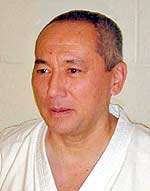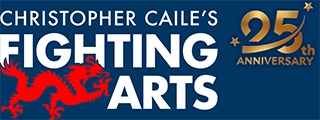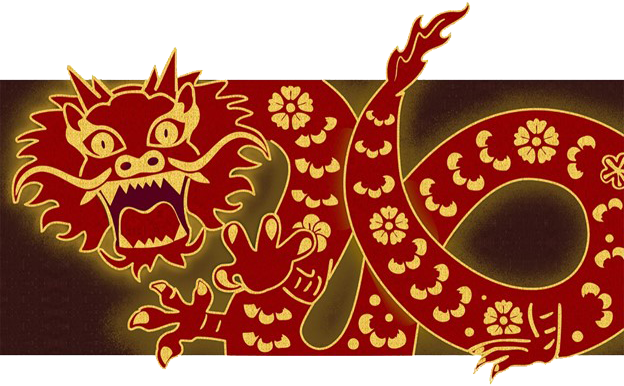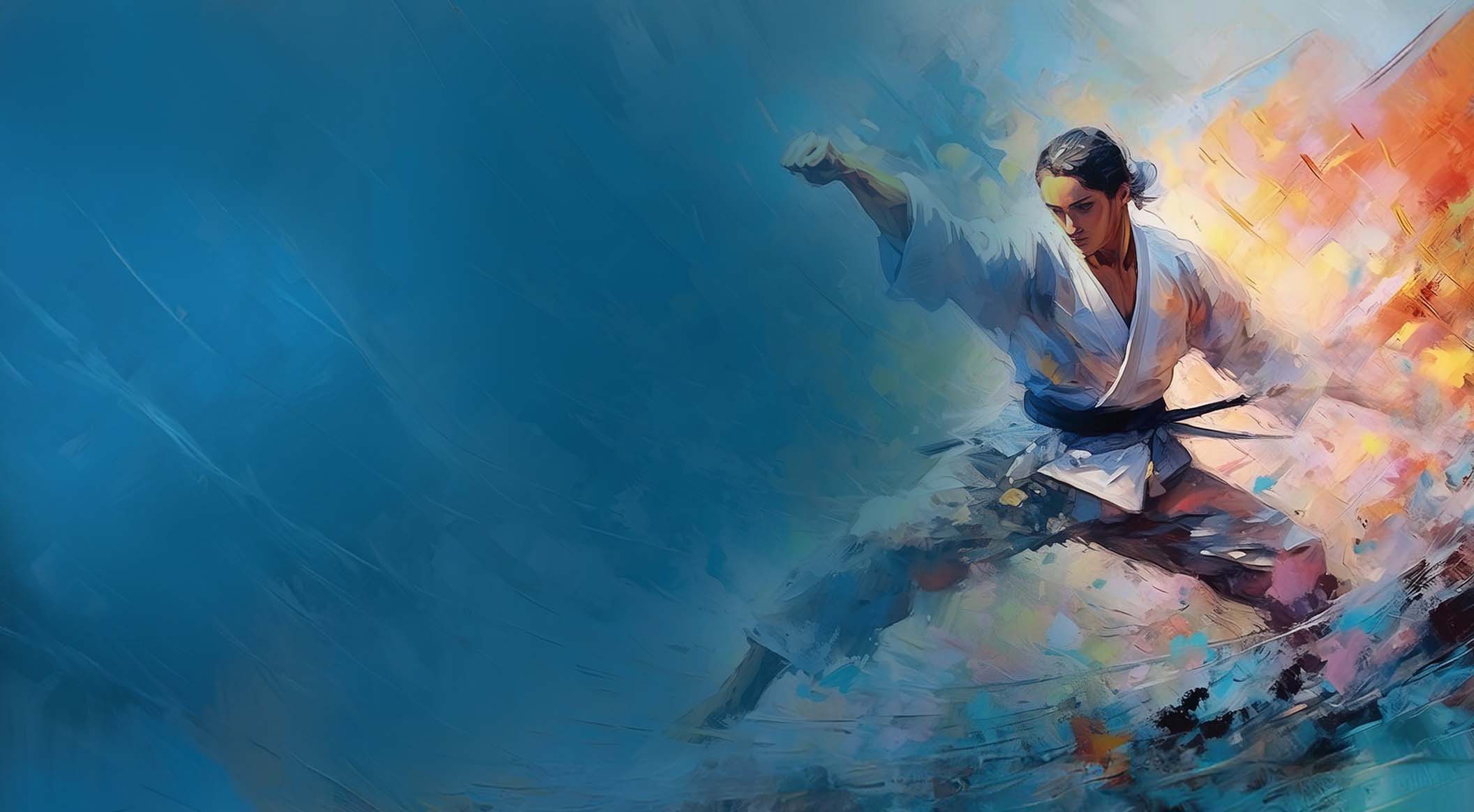Martial Mania
Ikkiri Jûgiri
By George Donahue

There is a very simple and useful motto that was for centuries kept as a core truth by a particular samurai family in Japan, and that is still observed by some of the descendants of that family: "ikkiri jûgiri." Literally, it means "one cut, ten cuts." When I was a child, I understood this motto to mean "If you cut me or mine once, I or we will cut you or yours ten times." If you offend me once, I'll retaliate tenfold. Early on, I adopted this motto, with this understanding of its meaning, as my own. This meaning was indeed the most immediately important, for its practice enabled that rather small family to survive centuries of war and aggression by its much larger and more powerful neighbors. It helped the family's descendants to make it through tough or dangerous modern times, too.
After I had internalized this motto, I learned that it was, in addition to a threat or warning, a statement of obligation. Not only would the family retaliate ten times over, it was the absolute obligation of each member of the family to see that the retribution was carried out. The motto instilled ferocity in its adherents; it made them tough enemies you wouldn't want to stir up. A good motto for a hornets' nest.
But there was more to it than that. The motto has always been qualified by the idea of "the sword that gives life," the idea that you take up arms, reluctantly, to save life or, paradoxically, to preserve peace. I used to think that this was a mere platitude issued to make war and aggression seem more righteous. I've often been wrong, and I was wrong about this—or maybe advancing age and arthritis have forced me to be more peaceful in thought and deed.
As I grew older, I saw that ikkiri jûgiri also applied to reciprocation of good actions. If someone did me a kindness, then I had a personal ethical obligation to repay that kindness tenfold. (It took maturity to understand this, even though I had been told often enough.) This understanding led me, for example, to donate ten pints of blood to the Red Cross for every pint that my father had received in transfusions during his surgeries. Although he hadn't needed a whole lot of blood, as transfusions go, it nonetheless took a long time to pay that debt, even counting the extra pints from apheresis. Once I'd paid it off, I continued to make regular donations, at the shortest interval possible. Blood donation had become habitual, but there was also the feeling that I would be prepaying my reciprocation for kindnesses and good things that might come to me in the future.
As I've grown still older, I've realized more and more that the simple initial interpretation of ikkiri jûgiri is far from the best. It has been a good motto all these centuries because it has been so complete. It was not only the ferocity of the family that helped it to survive, it was the equally obvious generosity. My own children have adopted this motto, too, and they're reaching an age where they seem to understand that kindness is to repaid tenfold, as well. I'm glad.
George Donahue
George has been on the board of FightingArts.com since its inception and is also a Contributing Editor.
George is a retired book editor, with a career spanning four decades, among his positions have been editorial stints at Random House; Tuttle Publishing, where he was the executive editor, martial arts editor, and Asian culture editor; and Lyons Press, where he was the senior acquisitions editor and where he established a martial arts publishing program. At Tuttle, he was the in-house editor for the Bruce Lee Library. Throughout his career he also edited, acquired, or reissued a wide array of military history, martial arts, and Asia-centric titles.
He was born in Japan in 1951 and originally named Fujita Tojo, with the Buddhist name KanZan. He was renamed George Donahue when he was several months old. After living part of his early childhood in the U.S. and France, he returned to Japan when he was seven years old and immediately was put (involuntarily) into intense training in traditional Japanese martial arts. His childhood training in Japan was focused on judo and jujutsu, primarily with Ando Shunnosuke, who blended keisatsujutsu (often referred to as police judo) and Olympic style judo in his teaching. He also studied kyujutsu (archery), sojutsu (spear), and kenjutsu (swordsmanship), with several teachers under the direction of his uncle, Tomita Yutaka. Following his return to the U.S. when he was twelve years old, he continued to practice judo and jujutsu, as well as marksmanship with Western style compound bow and firearms, and began the study of Matsubayashi Ryu karate in his late teens. Subsequently, he has studied aikido and cross trained in Ying Jow Pai kung fu. He began studying tai chi chuan in 1973 and now teaches qi gong and tai chi for health and fitness, as well as Okinawa Taijiken, which blends the principals of Okinawan karate with tai chi.
After studying Okinawa Karatedo Matsubayashi Ryu for ten years, he changed his focus to the teaching of Kishaba Chokei. He has been a student of Shinzato Katsuhiko, the director of Okinawa Karatedo Shorin Ryu Kishaba Juku, which comprises karate and kobujutsu (including Yamane Ryu Bojutsu) since 1983. He was also a student of Nagamine Shoshin, Nagamine Takayoshi, Kishaba Chokei, and Nakamura Seigi until their deaths. A key teacher in the U.S. was Arthur Ng, with whom he trained and taught for several years in New York City. He currently teaches Kishaba Juku privately, along with special training in karate, weapons, and self-defense. He has taught seminars throughout the U.S. and in Israel.
He has been teaching martial arts almost continually for sixty years. His first class, at twelve years old, was in judo for a group of military dependents and airmen at Sioux City Air Base, Iowa, at a time when the Air Force Strategic Air Command was beginning to stress training in martial arts, particularly jujutsu.
He was introduced to Kundalini Yoga practice in Japan but didn't begin serious practice of Kundalini and Hatha Yoga until he was in college. He practices yoga at least an hour a day and now teaches various approaches to yoga. He is also a cancer exercise specialist and a Livestrong at the YMCA instructor, helping cancer survivors regain and maintain their vitality.
Search for more articles by this author:






